The use of German armored vehicles in the postwar period
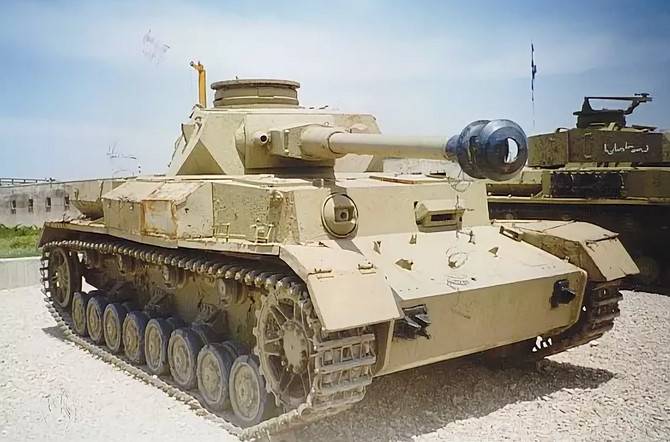
After the end of World War II, several hundred samples of serviceable German armored vehicles and up to one and a half thousand faulty and damaged vehicles suitable for restoration remained in the countries that participated in the war. In addition, at the enterprises of the Third Reich, not destroyed by bombing and artillery shelling, there were unfinished vehicles in varying degrees of readiness.
Use of captured German tanks and self-propelled guns in the USSR
As already mentioned in the previous parts of the cycle, at the final stage of the war in the Red Army there were several dozen trophy items suitable for use in battle. tanks and self-propelled guns.
A significant number of non-working, but completely repairable armored vehicles of German production were concentrated in emergency equipment collection points (SPARM).
For example, as of July 20, 1945, the Red Army had 146 Panther tanks, of which 63 were serviceable, and the rest required repair. However, among the tanks and self-propelled guns repulsed from the enemy, there were often copies of American, British and Soviet production.
The state of affairs with captured armored vehicles can be judged by the report submitted on May 15, 1945 by the headquarters of the 2nd Ukrainian Front:
Of the 192 armored personnel carriers captured, 11 are operational, 7 require repair. The state of the rest is being investigated.
On the 6th Guards Tank Army - 47 tanks, 16 self-propelled guns, 47 armored personnel carriers were captured. The condition is being investigated.
For the 53rd Army, 30 tanks and self-propelled guns and 70 armored personnel carriers were found, the state is being investigated.
For the 1st Guards Cavalry-Mechanized Group - the number and condition of captured tanks has not been established, since the tanks are being evacuated to the German tank repair plant in Janowice. "
The Soviet command decided to use serviceable captured armored vehicles for training purposes, so most of the German tanks in good technical condition were supposed to be transferred to tank armies and corps. Thus, captured tanks and self-propelled guns used in the process of combat training made it possible to save the resource of Soviet tanks used by the troops.
For example, on June 5, 1945, Marshal Konev ordered:
In the first post-war years, the Group of Soviet Occupation Forces had a lot of German-made tanks converted into tractors and technical support vehicles.
The operation of these machines was facilitated by the fact that they had plenty of spare parts that could be dismantled from captured tanks and self-propelled guns located in SPARMs.
A number of captured armored vehicles ended up on the territory of the USSR during the withdrawal of Soviet troops from countries liberated from the Nazis.
Subsequently, the demilitarized armored vehicles were transferred to the national economy. But unlike light cars and trucks, German tanks, converted into tractors and repair vehicles, in most cases did not last long. Affected by the complex structure of German tracked vehicles and their often improper maintenance.
In addition, for the German carburetor engines, gasoline with a higher octane number and special oils were required, which were different from those used in our country. Frequent breakdowns and difficulties with the supply of consumables, spare parts and fuel and lubricants led to the fact that by the end of the 1940s, there were almost no vehicles based on German tanks in civilian organizations.
Until the mid-1950s, captured tanks and self-propelled guns were actively involved in various research and testing of new Soviet armored vehicles. German guns 7,5 cm Kw.K. 42, 8,8 cm Pak. 43 and 12,8 cm PaK. 44 were the standard of armor penetration. And in the process of testing promising Soviet tanks at the range, their armor was tested by firing from German tank guns.
In turn, many German "panzers" ended their lives at artillery and tank ranges as targets. Cemeteries of broken armored vehicles became a source of raw materials for the Soviet metallurgical industry for many years. The last German tanks went to open-hearth furnaces in the early 1960s.
The few surviving tanks and self-propelled guns that once belonged to the Panzerwaffe were used in the filming of feature films about the war. And now they are in museum collections.
Tanks and self-propelled guns of German production in Bulgaria
During World War II Bulgaria, an ally of Nazi Germany, received 61 Pz.Kpfw.IV Ausf.H tanks, 10 Pz.Kpfw. 38 (t) tanks, 55 StuG.III Ausf self-propelled artillery mounts. G.
On September 8, 1944, when it became abundantly clear that the Germans were losing the war, Bulgaria officially declared war on Germany. And tanks and self-propelled guns of German production were involved in hostilities with units of the Wehrmacht and SS troops. During the battles in Yugoslavia, the Bulgarian tank brigade lost a significant part of the equipment. Irrecoverable losses amounted to 20 tanks and 4 self-propelled guns.
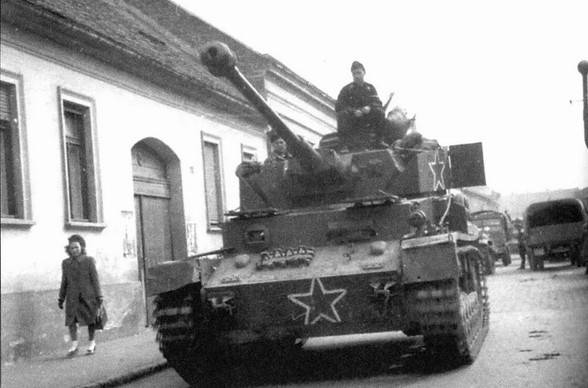
To maintain the combat effectiveness of the Bulgarian armored forces in early 1945, the command of the 3rd Ukrainian Front transferred a dozen captured tanks and self-propelled guns, including: one Pz.Kpfw.IV tank, as well as the StuG.III and Hetzer self-propelled guns.
Apparently, before the capitulation of Germany, Soviet troops regularly supplied the Bulgarian army with captured armored vehicles. After the end of World War II, at the beginning of 1946, the Bulgarian First Tank Brigade, in addition to vehicles of Czech, French and Italian production, had 57 German Pz.Kpfw.IV tanks, 15 Jagd.Pz.IV tank destroyers and 5 StuG.III self-propelled guns. There is also information that the Bulgarians briefly exploited at least one "panther".
In the late 1940s, German-made tanks and self-propelled guns in the Bulgarian armed forces began to be supplanted by the Soviet T-34-85 and SU-100. As of mid-1950, only 11 Pz.Kpfw.IV tanks remained in service. At the same time, a significant number of captured German tanks were in storage.
Subsequently, after the start of deliveries of T-55 tanks, German "troikas" and "fours", as well as their towers were used in the construction of long-term firing points on the Bulgarian-Turkish border. The exact number of such pillboxes is not known. But various sources say that there could have been more than 150 of them. Taking into account the fact that Bulgaria itself did not have such a number of tanks and tank turrets with weapons, they, most likely, received from the allies under the Warsaw Pact.
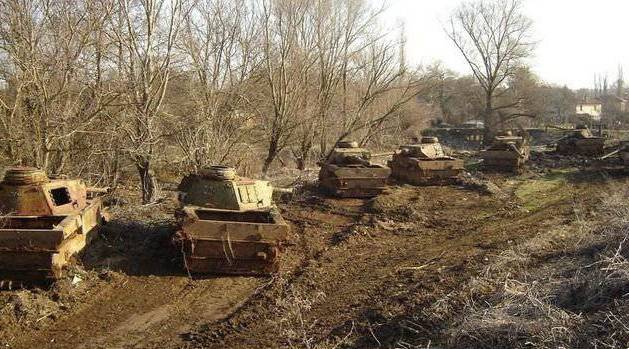
The rare tanks were remembered in December 2007. After the Bulgarian police arrested the thieves who stole a German-made tank on the Bulgarian-Turkish border and tried to take it to Germany.
After this incident, which received a wide response, the Bulgarian government took control of the restoration and trade in German tanks. In total, the Bulgarians managed to restore 55 units of German armored vehicles, which they put up for auction. The price of each tank was several million euros.
Tanks and self-propelled guns of German production in Romania
One of the main importers of German tanks during World War II was Romania, which received 11 PzKpfw.III, 142 Pz.Kpfw.IV and 10 StuG.III assault guns.
After Romania went over to the side of the anti-Hitler coalition, very few serviceable armored vehicles of German production remained in the Romanian army. In this regard, the 2nd Tank Regiment, which was attached to the Soviet 27th Tank Brigade (2nd Ukrainian Front) in February-March 1945, was reinforced with several captured Pz.Kpfw.IV, as well as the StuG.III, StuG self-propelled guns. IV and Hetzer. By the time the hostilities ended, the Romanian tank regiment had four capable Pz.Kpfw.IV.
In 1946, the Soviet Union handed over to Romania a batch of German-made tanks (an unknown number of Pz.Kpfw.IV and 13 "panthers"). The tanks entered service with the 1st Tank Brigade, which in 1947 was reorganized into the Tudor Vladimirescu Tank Division. These machines were in operation until 1950, after which they were decommissioned.
German tanks and self-propelled guns in the army of Czechoslovakia
During the Second World War, factories located in the Czech Republic were among the main manufacturers weapons for the Wehrmacht and SS troops. Firms "ČKD" and "Skoda" stopped producing armored vehicles only shortly before the surrender of Germany. Also, the Czechs had more than two hundred serviceable and suitable for restoration German tanks.
In July 1945, about 40 armored vehicles were assembled at a site in the vicinity of Milovice, about 400 km north of Prague. Taking into account the fact that Czechoslovakia had very good capabilities for the production and repair of tanks and self-propelled guns used in the armed forces of Nazi Germany, a significant amount of captured German armored vehicles entered service with the Czechoslovak army in the early post-war years. In 1946, about 300 medium tanks and self-propelled guns, as well as 65 "panthers" were transferred to the Czechs.
In the Czechoslovak army, the captured Pz.Kpfw.IV was designated T40 / 75. In total, about 50 "fours" of modifications J and H served in combat units. Operation of these machines continued until 1954.
As of May 9, 1945, about 250 Hetzer self-propelled guns were available at Czech factories and tank repair shops in varying degrees of readiness. It was this self-propelled gun in the first post-war years that became the most massive in the armed forces of Czechoslovakia. In November 1945, the Czechoslovak Headquarters of Tank Forces decided to accept the Hetzer into service under the designation St-Vz.38-I.
Among the "fours" and "panthers" in the armored forces of Czechoslovakia quite predictably prevailed the "Hetzers", which, together with the StuG.III assault guns, entered service with the 21st and 22nd tank brigades, which in 1948 were transformed into the 351st and 352 XNUMXst self-propelled artillery regiments.
However, already in the early 1950s, after licensed production of Soviet T-34-85 and SU-100 was launched in Czechoslovakia, the process of writing off captured German tanks and self-propelled guns began.
Swiss "Hetzers"
In the post-war period, Switzerland became the buyer of the Hetzer, whose armored fleet needed updating and consisted of 24 LTH light tanks - an export version of the LT vz. 38, which served as the base for the Hetzer. In August 1946, Skoda received a contract for eight vehicles. In Switzerland, this ACS received the designation Panzerjaeger G-13.
Using the reserve left over from the Germans, the first batch of Hetzers was quickly delivered to the customer. However, another order for 1946 self-propelled guns, which followed in November 100, was on the verge of collapse, since there were no Rak 39/2 guns available.
But a solution was found, Czech engineers promptly revised the drawings. And self-propelled guns began to be armed with StuK.40 cannons, which were in sufficient numbers in warehouses.
In addition, instead of a carburetor engine, starting with the 65th car, a 148 hp Sauer-Arbon diesel engine was installed. with. The fuel consumption of a diesel engine was more than half that of a gasoline engine. The efficiency of the new power plant allowed the fuel tank to be reduced from 250 to 115 liters, which significantly increased the useful reserve volume. The speed of the G-13 on the dirt road remained at the level of 25-30 km / h, the cruising range also remained almost unchanged.
The combat weight of the Swiss "Hetzer" was one ton less than the German one. A 13-chamber muzzle brake appeared on the G-2 gun, the commander and loader changed places. A rotating observation device was installed on the roof. And the commander's observation device in an armored turret.
Visually, the Panzerjaeger G-13 can be easily distinguished from the original Hetzer by the muzzle brake and optical instruments. Unlike the Jagdpanzer 38 (t), which has bare sides of the wheelhouse, on the outer side of the armor of the Swiss tank destroyer are located: a box with spare parts, track links and a spare roller.
In general, the "Swiss" version turned out to be more successful than the original modification. And in 1947 another 50 self-propelled guns were ordered. The last 20 vehicles were delivered to the customer on February 16, 1950. These tank destroyers were in service with the Swiss army until 1972.
French "Panthers"
After the liberation of France from the Nazis, several hundred German tanks and self-propelled guns suitable for further use remained on the territory of this country. And in the future, some of these vehicles were adopted by the French national armored units.
French sources claim that in 1946 in a separate tank squadron "Benier" there were three dozen "fours". These were mainly tanks of the PzIV Ausf. H. About four dozen more medium tanks were in storage. And they were used as a source of spare parts.
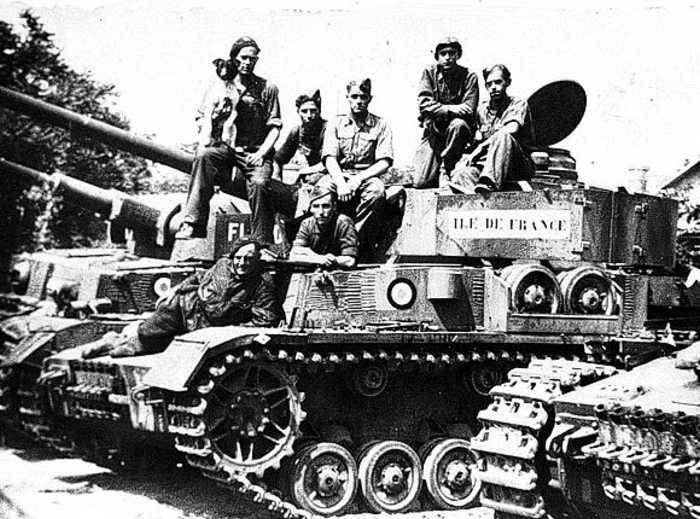
Tanks Pz.Kpfw.IV of the separate squadron "Benier"
Against the background of "fours" and captured self-propelled guns in the French army stood out "panthers", which together with the American M4 Sherman served in the 501st and 503rd tank regiments, as well as in the 6th cuirassier regiment.
The first captured "panthers" were used by the resistance forces ("French Internal Forces") in the summer of 1944.
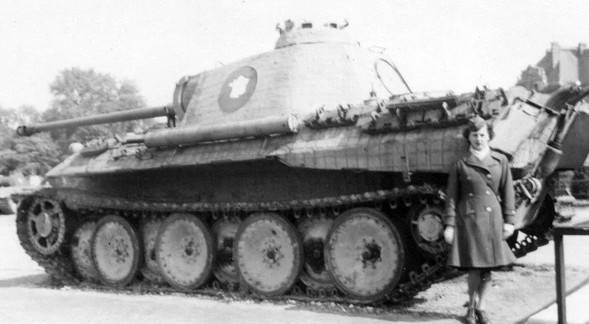
One of the "panthers" captured by the Resistance Movement
In the post-war period, the operation of these machines was facilitated by the fact that there were training centers in France where the Germans trained crews, tank repair enterprises and a significant amount of spare parts and consumables.
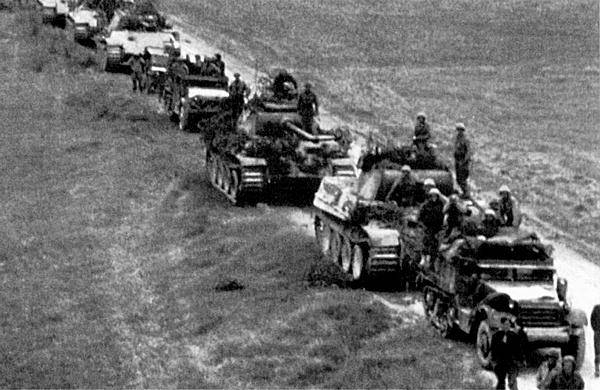
"Panthers" of the 503rd tank regiment in the same ranks with American-made armored personnel carriers, 1947
Although the "Panther" was very difficult and time-consuming to repair and made high demands on the qualifications of driver mechanics, the French were impressed by the security in the frontal projection and the firepower of this vehicle. As of 1949, there were about 70 serviceable "panthers".
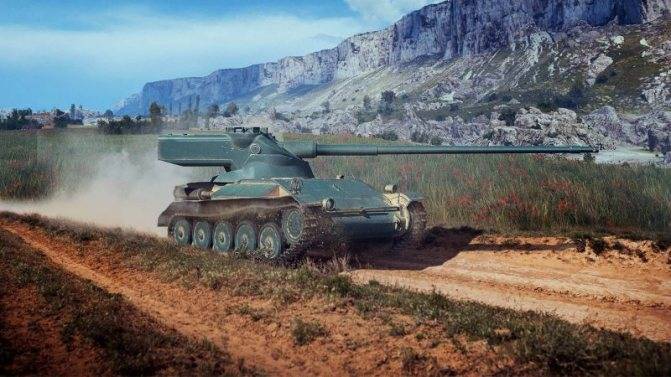
Light tank AMX-13
"Panther" left a noticeable mark on French tank building. After the last Pz.Kpfw.V Panther was decommissioned, the AMX-13 light tank was produced in France, armed with the SA50 L / 57 gun, created on the basis of the German 75 mm KwK cannon. 42 L / 70.
German tanks in Turkey
In 1943, the Turkish government bought 56 Pzkpfw.III Ausf tanks in Germany. J with 50 mm cannons and 15 Pz.kpfw.IV Ausf. G. These vehicles were used to form the 6th Armored Regiment stationed in Ankara.
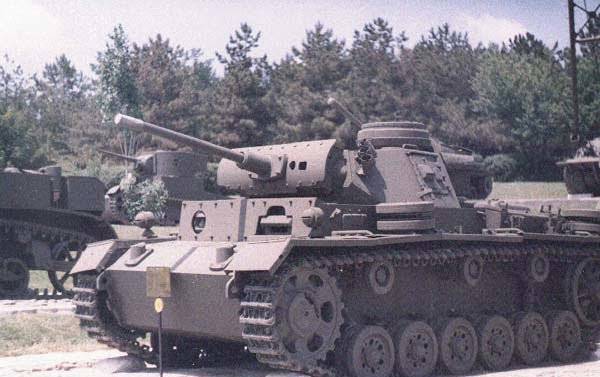
Pzkpfw.III Ausf. J in the exposition of the tank museum Etimesgut
German-made tanks served in Turkey until the mid-1950s.
Then they were finally ousted by American and British armored vehicles.
German tanks and self-propelled guns in Spain
Another country that received the PzIV Ausf. H and ACS StuG.III Ausf. G, became Spain.
In 1943, twenty “fours” with long-barreled 75-mm guns and 10 self-propelled guns supplemented the hopelessly outdated Italian and German CV-1 and Pz.Kpfw.I tankettes in the 33st Brunete Panzer Division, as well as Soviet-made light tanks T- 26.
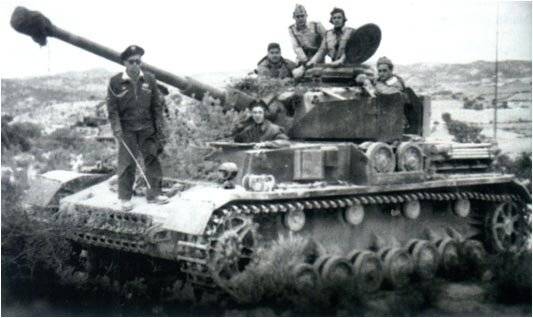
Spanish tank Pz.Kpfw.IV Ausf. H
Tanks Pz.Kpfw. IV Ausf. H served in the Spanish armed forces until 1956. Then they were replaced by American M24 Chaffee and M47 Patton, and went into storage. Seventeen "fours" in 1965 were sold to Syria. And 3 more tanks ended up in Spanish museums.
German tanks and self-propelled guns in Finland
In 1944, Finland received 29 StuG.III Ausf assault guns. G and 15 Pz.Kpfw.IV Ausf. J.
In the military workshops, the Pz.Kpfw.IV tanks and the StuG.III self-propelled guns were modernized. They removed the side screens that hindered movement in wooded areas. And on the sides were hung tracks, rollers and boxes with spare parts. German MG.34 machine guns were replaced by Soviet DT-29. Armored vehicles of German production managed to take part in hostilities. And several damaged Pz.Kpfw.IV and StuG.III became a source of spare parts.
German-made tanks and self-propelled guns served in a tank division created on the basis of the 1st Jaeger Brigade. In the same division, in addition to German vehicles, there were Soviet T-26, T-28, T-34, T-38, T-50, KV-1.
The conclusion of a truce with the USSR led to clashes with German units stationed in Lapland, in which Finnish tanks took part.
Subsequently, the only Finnish tank division was disbanded, and its equipment was transferred to storage.
After the end of World War II, the tank fleet was reduced. And only T-34, Pz.Kpfw.IV and StuG.III remained in the Finnish armed forces.
However, due to the lack of spare parts, the combat effectiveness of German-made tanks and self-propelled guns was low.
The final decommissioning of the Pz.Kpfw.IV and StuG.III took place in the mid-1960s.
German tanks and self-propelled guns in Poland
The first two German "panthers" were captured by the Poles during the Warsaw Uprising in August 1944. After repairs, these vehicles were effectively used in combat, but were damaged in fire duels with German anti-tank artillery. And they were destroyed by Polish crews.
Soon after the surrender of Germany, the Polish armed forces were reinforced with captured armored vehicles. In June 1945, at the direction of the Headquarters of the Supreme High Command, it was ordered to transfer a large consignment of captured armored vehicles to the 1st Polish Army, which was under the operational subordination of the Commander-in-Chief of the Group of Soviet Occupation Forces.
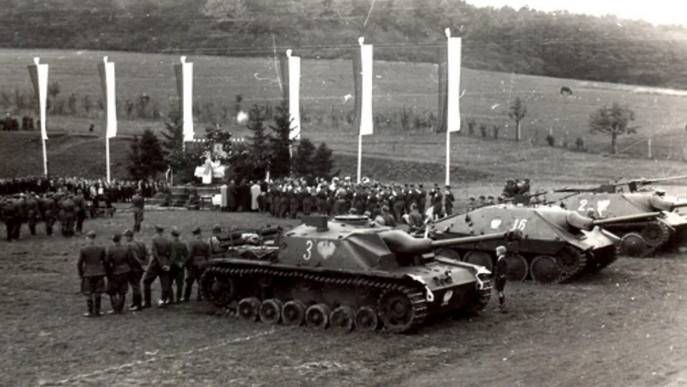
The Poles received about fifty tracked armored vehicles: Pz.Kpfw.IV tanks, StuG.III and Hetzer self-propelled artillery mounts.
These vehicles remained in service until the early 1950s.
German tanks and self-propelled guns in the armed forces of Yugoslavia
During the fighting, the troops of Marshal Tito recaptured a significant number of tankettes, tanks and self-propelled guns from the Croats and Germans. Most of the trophies were hopelessly outdated Italian and French cars. Among them were also light tanks Pz.Kpfw. 38 (t) and Pz.Kpfw.II, medium Pz.Kpfw.III, Pz.Kpfw.IV and ACS StuG.III.
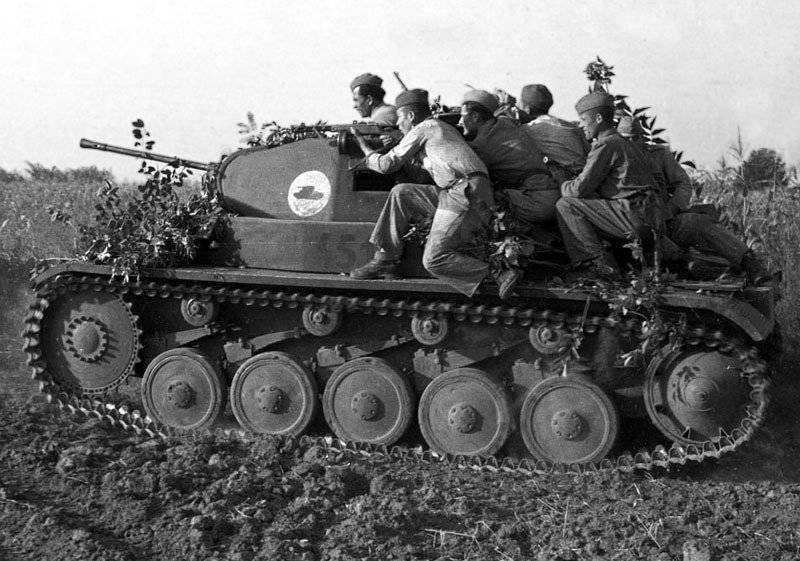
Captured German light tank Pz.Kpfw. II during the exercises of the Yugoslav People's Army
The captured vehicles were operated in conjunction with American light tanks "Stuart" and Soviet "thirty-four". In the early post-war years, German-made tanks were actively used during exercises to designate the enemy. Subsequently, the remaining German vehicles on the move were transferred to the Tank Military School. In the late 1940s, the JNA had a self-propelled artillery division armed with the StuG.III self-propelled guns.
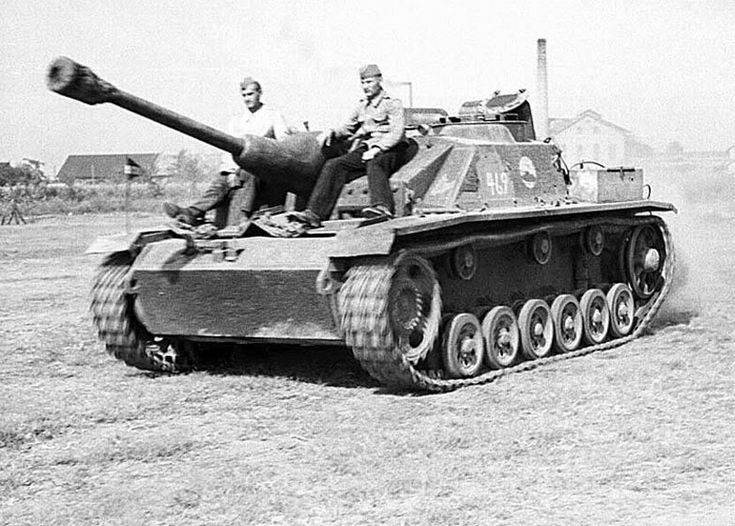
Yugoslav SPG StuG.III
In 1947, Yugoslavia received an additional 308 T-34-85 tanks and 52 SU-76M self-propelled guns.
And in the first half of the 1950s, all German tanks and self-propelled guns were decommissioned.
The use of German tanks and self-propelled guns in hostilities in the Middle East
After the defeat of Nazi Germany in World War II, in the countries on whose territory the hostilities were fought, a lot of German armored vehicles remained, suitable for further use.
In the first post-war years, Pz.Kpfw.V Panther tanks were used in the armed forces of some states. The armor penetration of the gun and the protection of the "Panther" in the frontal projection were at a very high level by the standards of the second half of the 1940s. However, insufficient service life, low reliability and poor maintainability led to the fact that by the beginning of the 1950s Pz.Kpfw.V tanks were removed from service everywhere.
Unlike the capricious "Panthers" in operation, the Pz.Kpfw.IV tanks and the StuG.III self-propelled guns were reliable and very unpretentious vehicles. Their operation lasted more than 20 years - this demonstrates that the designs developed by German engineers in the late 1930s turned out to be very successful.
The heavy Tigers and Panthers are often called the best German tanks. But it is fair to give this title to the middle Pz.Kpfw.IV - as the only German tank produced and used from the beginning to the end of World War II.
This machine had a great modernization potential, turned out to be the most massive and successful in terms of operation.
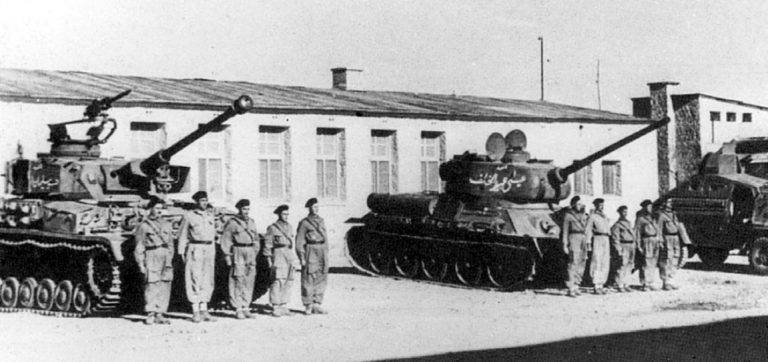
In one formation of the Syrian army, former opponents - the German PzIV Ausf. J and Soviet T-34-85, late 1950s
In the early 1950s, the Syrian government was concerned with increasing the combat capability of the armed forces.
To replace the outdated and exhausted light tanks Renault R35 in France, medium tanks Pz.Kpfw.IV were purchased. The exact number of purchased "fours" is unknown. But, apparently, there were no more than 40 of them.
Almost all of them, due to great wear and tear, were in a deplorable technical condition. Moreover, some tanks were previously used as donors. And they were dismantled. In this regard, the Syrians "discharged" 16 Maybach HL 120 TRM engines from Czechoslovakia.
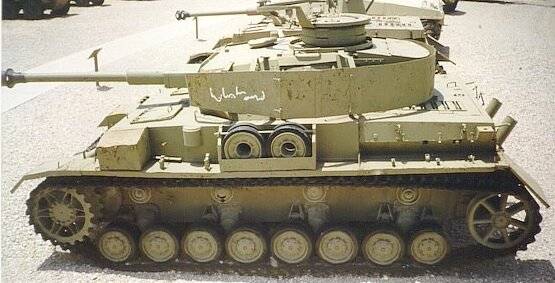
In the spring of 1955, a contract was signed with Czechoslovakia for the supply of 45 Pz.Kpfw IV units.
In 1958, another batch of 15 vehicles was purchased.
The most valuable were 17 Spanish PzIV Ausf. H purchased in 1965. These machines were in very good technical condition and, with proper care, could serve for a long time.
Although in the mid-1960s German-made combat vehicles could no longer be considered modern, their guns were powerful enough to fight the Shermans, of which there were many in the Israeli army.
In addition to the Pz.Kpfw.IV tanks, the Syrians acquired about three dozen StuG.III and Jagd.Pz.IV self-propelled guns in Czechoslovakia, which were used as tank destroyers.
German tanks and self-propelled guns were distributed across three infantry brigades: the 8th, 11th and 19th.
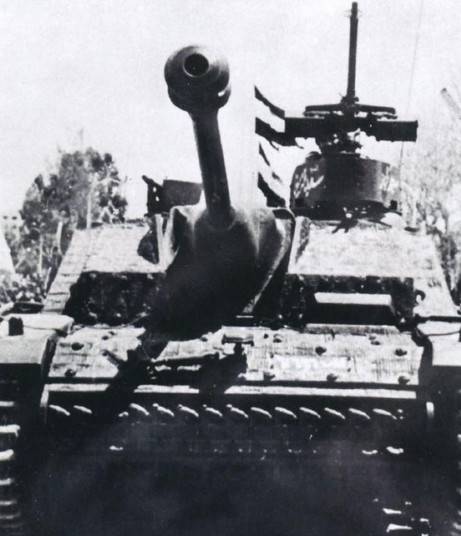
Syrian SPG StuG.III
In Syria, German tanks and self-propelled guns were refined.
The vehicles received from France and Spain were armed with MG.34 machine guns, and those purchased in Czechoslovakia with Soviet DT-29s. Some of the tanks and self-propelled guns were equipped with turrets for anti-aircraft machine guns. Most of the tanks did not have a machine gun in the frontal plate - the ball mount was either empty or covered with an armor plate. At the same time, the position of the gunner-radio operator was abolished, and instead of the German radio station Fu 5, a modern analogue was installed at the commander.
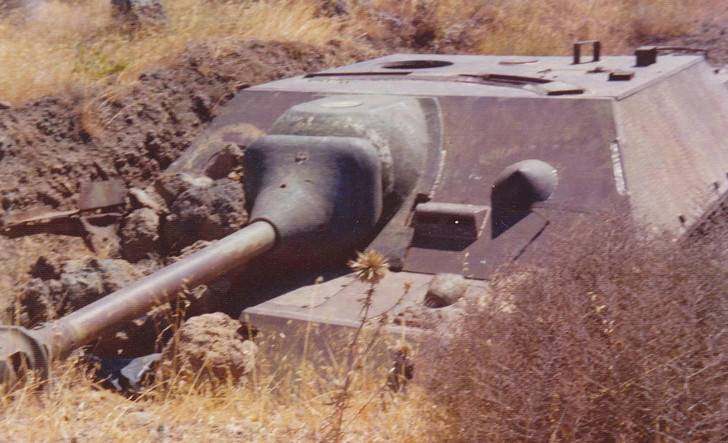
The Six Day War was the last use of German tanks in World War II.
Before the outbreak of hostilities, units equipped with German-made tanks were deployed in the Golan Heights.
In total, there were 201 armored vehicles in the defense in this direction. Of these, about three dozen are German tanks and self-propelled guns. By that time, the Syrian armored forces were a conglomerate of tanks and self-propelled guns of Soviet and German production.
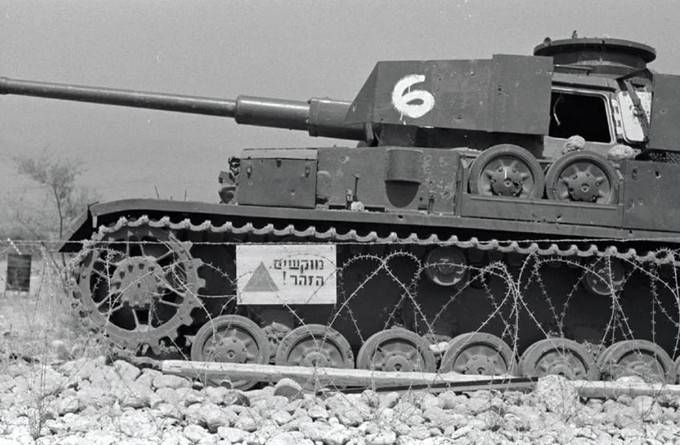
One of the Pz.Kpfw.IV captured by the Israelis
During the 1967 Six Day War, almost all German-made tanks and self-propelled guns were destroyed or captured by the Israeli army.
For a short period of time, the captured “fours” were used by the Israelis as long-term firing points. Four captured vehicles became monuments and exhibits in museums. Two more vehicles were used to assess the effectiveness of anti-tank ammunition.
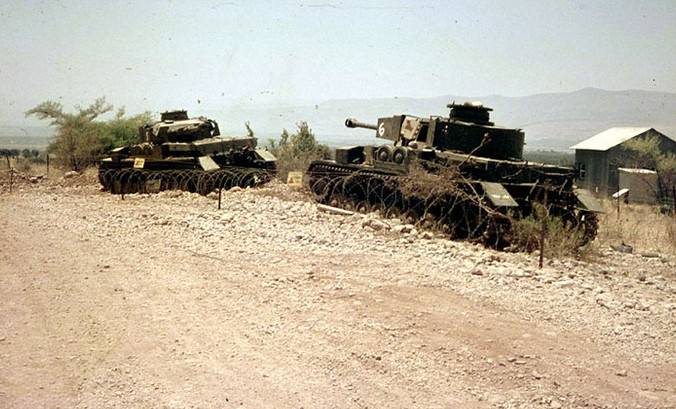
After this conflict, no more than two dozen Pz.Kpfw IVs remained in the Syrian army in a depressing state.
After the defeat of the Syrian army in the Six Day War, large-scale deliveries of Soviet tanks T-55, T-62, IS-3M and ACS SU-100 began.
And all the surviving German-made tanks and self-propelled guns were sent for disposal.
The ending should ...
- Linnik Sergey
- Use of captured German pistols in the USSR
The use of German captured submachine guns in the USSR
The use of captured German rifles and machine guns in the USSR
The use of captured German machine guns in the USSR
The use of captured German tanks and self-propelled guns in the initial period of the Great Patriotic War
Use of captured "Panthers" and "Tigers" at the final stage of the Great Patriotic War
The use of captured German self-propelled guns in the Red Army at the final stage of World War II

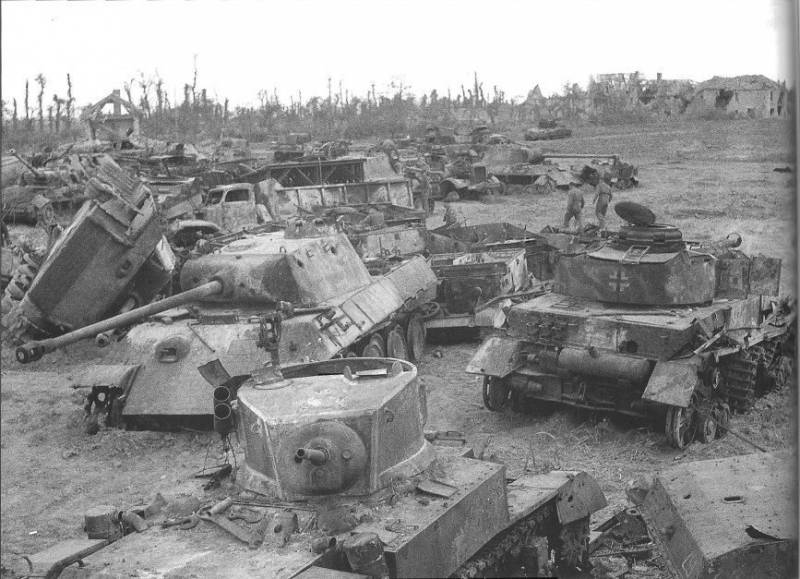
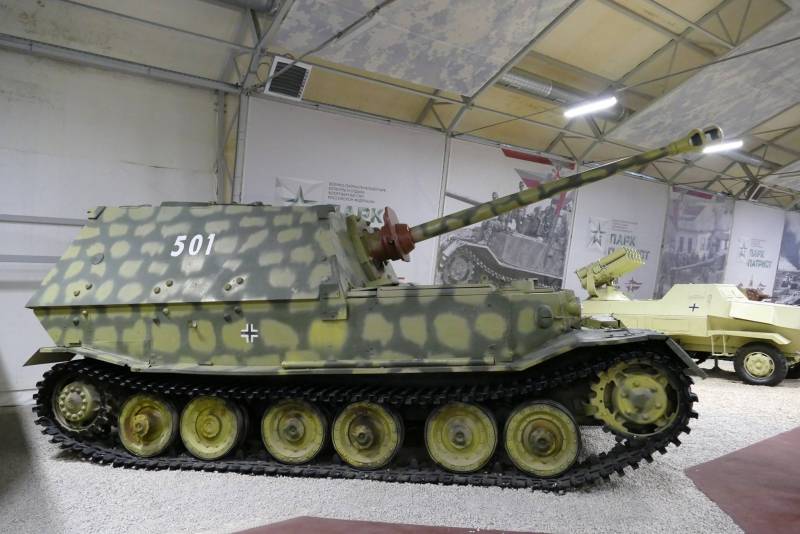
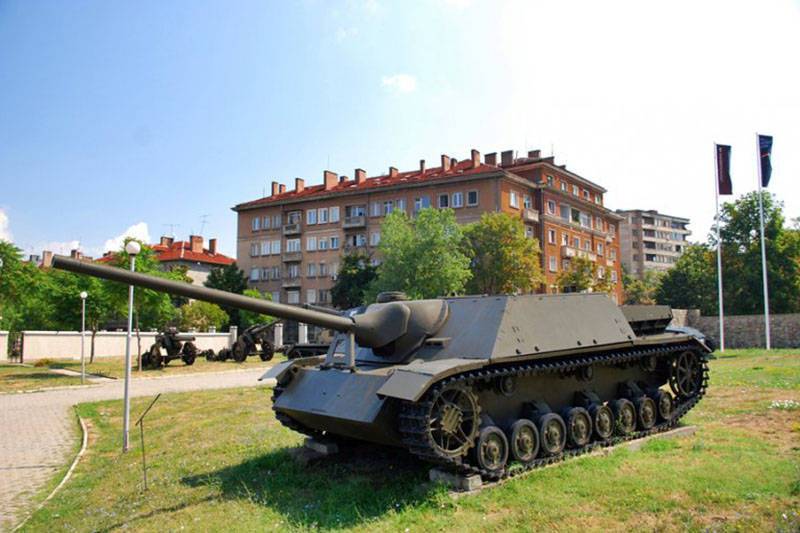
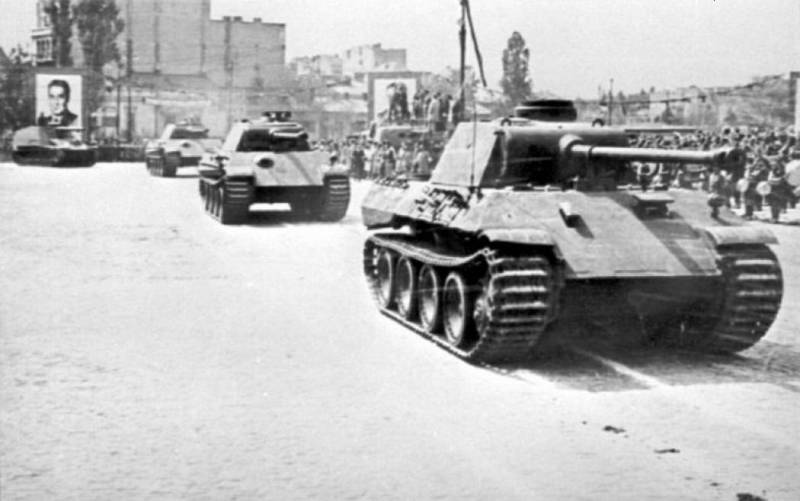
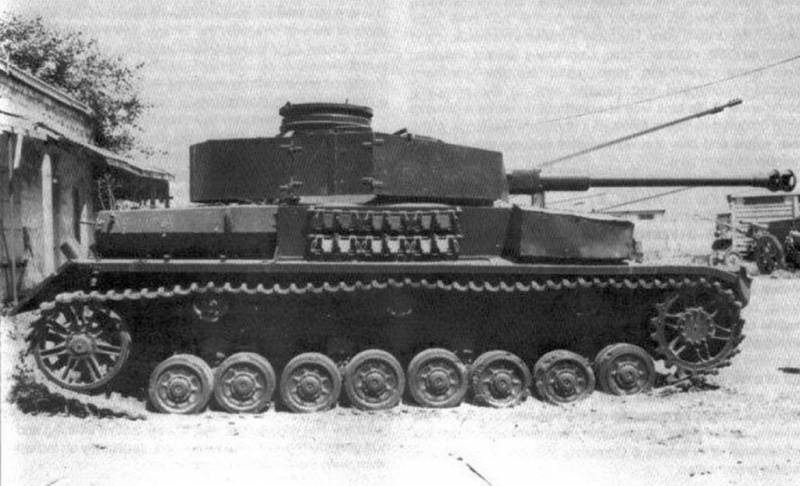
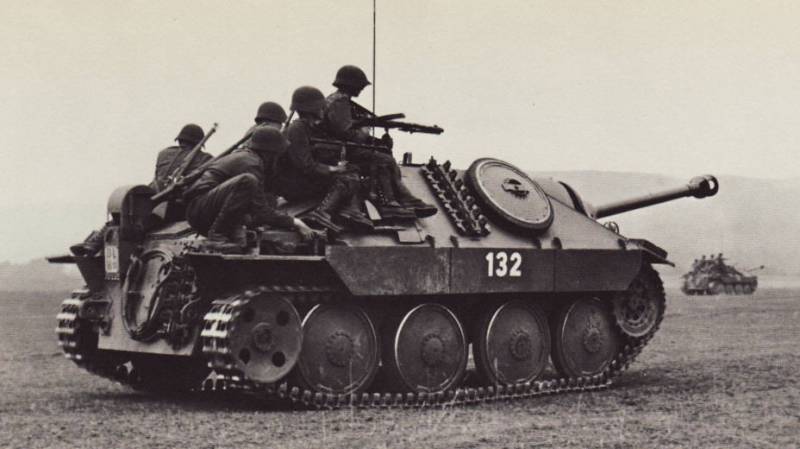
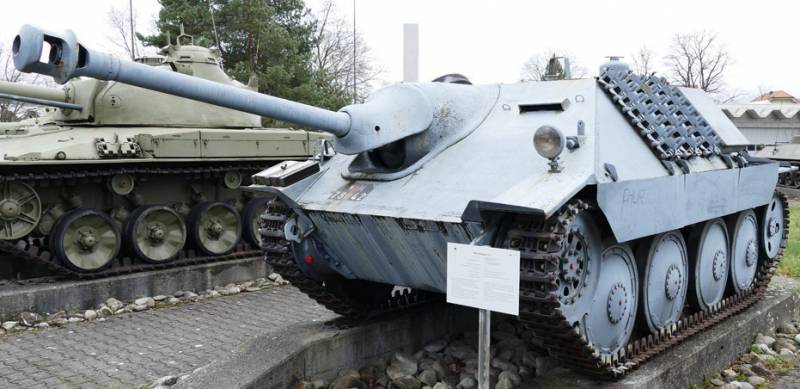
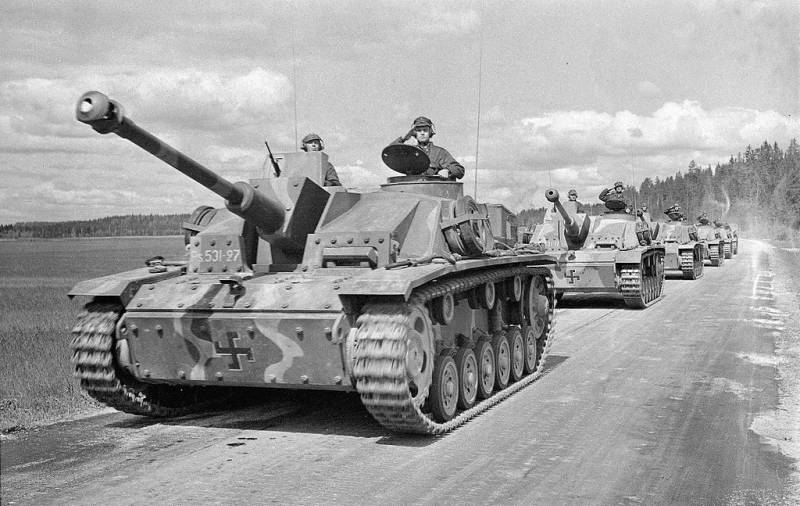
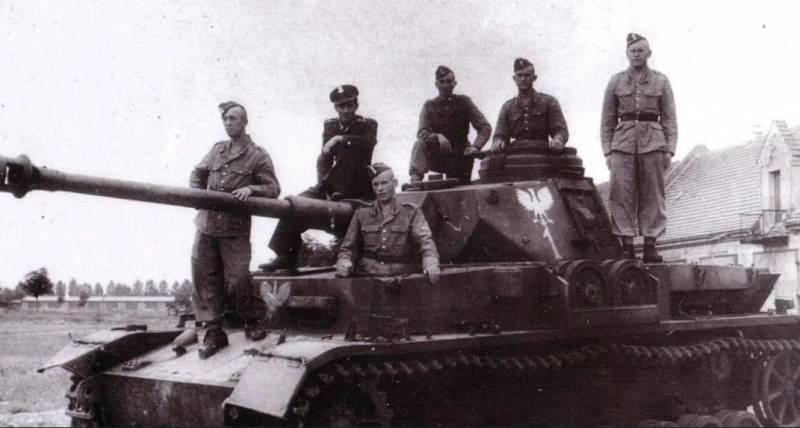
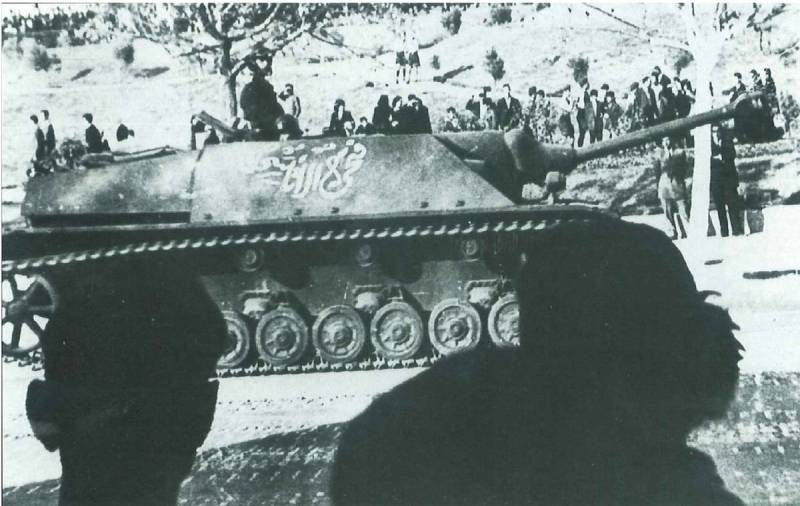
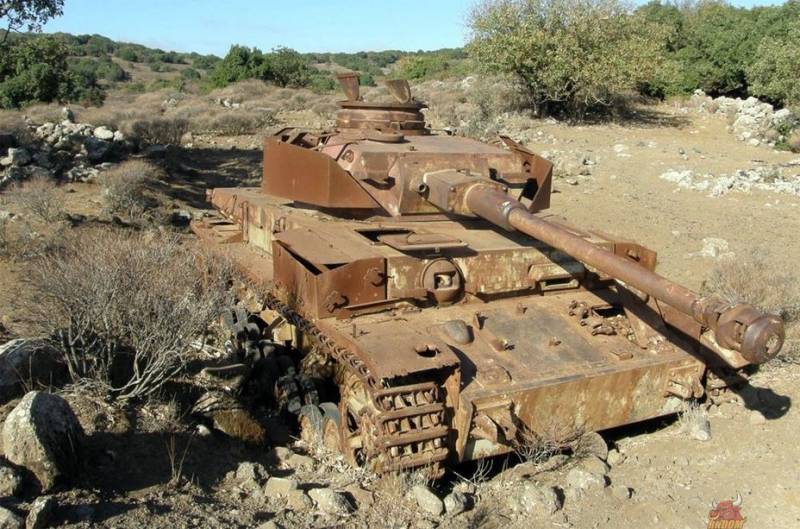
Information